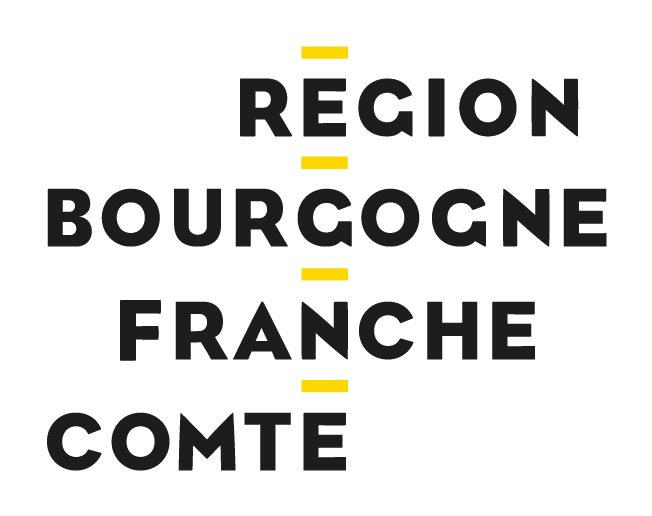27 September 2021 / The experts of the Vitagora ecosystem / Vitagora publication / Science and technologies
"Emotioning": creating consistency between a brand, a product, and the emotions conveyed

Close links exist among food products, emotional feelings and brand positioning, but the proof of promises of emotion, touted on a product’s packaging, must be present in the eating! How can food brands ensure a consistent experience of emotion? A new field of sensory analysis is developing to respond to this: emotioning.
Why this should interest you?
- We now know that emotion plays a central role in the decision-making process concerning a food choice.
- Packaging is also a powerful vector of emotional feelings.
- Eating also provokes emotional feelings.
- Checking the balance between the feelings caused by the tasting and the positioning of a brand or a product allows food brands to ensure that the promise made to consumers, on packaging in particular, is kept.
It is estimated that emotion plays an 80% role in a consumer's decision-making process, especially for food choices: packaging promising freshness in the summer heat, enhancing comfort, ensuring exoticism, etc. Food and emotional feelings are strongly linked.These close links between food, emotional feelings and brand positioning represent a relevant opportunity for the food industry: the opportunity to stand out, revitalise a brand and boost sales, etc. Still, where there is a promise of emotion, the proof must be in the eating!
Ensure a consistent experience of emotion, which is essential to the success of a food product, the “emotioning” approach is being developed within sensory analysis services.
Examples from the Actalia “Sensoriel” centre and its “emotioning” tool can be discovered below.
Actalia
Actalia is an agrifood technical centre which offers services around 6 poles of expertise, with a strong specialisation in the milk sector and food safety. Within Actalia, the “Sensoriel” centre, made up of 40 staff members spread over 3 sites in France, is dedicated to services relating to consumer, sensory and emotional studies for companies of all sizes - from SMEs to large groups.
With more than 30 years of experience in the field, a solid knowledge of the sensory drivers of the main categories of consumer products and a panel of approximately 9,000 consumers, Actalia Sensoriel is able to provide insights for food industry decision-making and recommendations supported by scientific studies.
“Emotioning” is a theme of work carried out within Actalia Sensoriel, dedicated to the analysis of the emotional profile created by a product and its packaging.
The role of emotions in food choices
Faced with a supermarket shelf, a grocery aisle or in front of their refrigerator, how do consumers make their choices? Are purchases really a rational thought process on how to gain maximum value for money? Behind these questions lie discussions on the activation of emotions in the process of food choices.

Decision-making process: make way for emotions!
In 1980, Robert B. Zajonc, an American psychologist of Polish origin specialising in social psychology and group phenomena, became interested in the construction of preferences outside rational thought among consumers. He published “Feeling and thinking: Preferences need no inferences” in the scientific journal American Psychologist, where he suggested that affective reactions can occur independently of cognitive reactions. He also stresses that these reactions are often the first to occur – and, therefore, certainly the most important in the decision-making process. In doing so, he formulated the foundations of research on emotions as an influence of choices beyond rational reasoning.
These reflections call into question in particular the rational and logical approach to the decision-making process of the Engel, Kollat and Blackwell model in 5 stages (recognition of the problem, search for solutions, evaluation of options, decision and act of purchase, evaluation after purchase), a "utilitarian" approach dating from 1968.
Since the 1980s, many studies on the analysis of consumer behaviour have focused on the role of emotions: the final choice (even if not necessarily conscious) could be made according to the emotional feeling that a brand provides to a consumer. Many parameters then come into play: memories, state of mind, intuition, search for an experience, search for pleasure, external pressures (time...), etc.
Recently, researchers have looked specifically at the role of emotions as predictors of food choices. In 2014, works published by Dalenberg (Dalenberg JR, Gutjar S, Ter Horst GJ, de Graaf K, Renken RJ, Jager G - PLoS One. 2014; 9 (12): e115388) discussed the importance of consumer emotions in predicting food choices, based on hedonic scales. In 2015, research conducted by Gutjar confirmed the importance of the role of emotions aroused by food in predicting food choices more accurately than product satisfaction (Gutjar S., De Graaf C., Kooijman V., De Wijk R.A., Nys A., Ter Horst GJ, et al. (2015b). The role of emotions in food choice and liking. Food Res. Int. 76 (Pt 2), 216–223. 10.1016/j.foodres.2014.12.022).
"Today, it is generally estimated that emotions play an 80% role in a consumer's decision-making," summarises Dominique Droger, Head of Consumer & Sensory Studies Projects, and Virginie Herbreteau, Director of Studies, in the sensory department of Actalia.

"Emotions": beware of confusion
Emotion is a complex concept, behind which we find different notions. Two researchers (Paul and Anne Kleinginna) identified no less than 92 different definitions of emotion! "With the term "emotions", there is often confusion," confirm Dominique and Virginie: "with ‘mood’, for example, which is of a moderate intensity and lasting over time, unlike emotion which is more short-lived and triggered by a specific stimulus. Or with ‘feeling’, which is a subjective awareness of a present or past emotion. What we do know about emotions is that they are primary reactions, uncontrolled, and independent of cognition.”
The majority of researchers agree on the existence of 7 primary emotions: anger, sadness, joy, surprise, disgust, shame and fear. Dominique and Virginie explain: “if brands can play on these 7 emotions, they do not really have a direct link with food: they will not come out of a tasting, for example.
On the other hand, what interests us, within Actalia's Emotioning department, is the activation of emotional experiences, pleasure for example, during tastings.”
Emotioning: ensuring a coherent experience between a promise of emotions and the tasting
The principle of emotioning
“We now know that emotions are part of the area of decision-making among consumers. What interests product manufacturers is therefore that their products can provide pleasure and positive emotions," explain Dominique and Virginie.

But they temper this ambition: “product failures are often linked to an inconsistency between the promise of emotional activation, which will guide the consumers' choice, and what consumers actually find when consuming." To respond to this challenge, the discipline of emotioning was developed by Actalia, with the development of the first experiments in 2014. “In a few words, it is about analysing the emotional profile aroused by a product and its packaging.”
Objective: scientifically verify an intuition
Emotioning can be applied to all types of products that arouse emotions: snacks, chocolates, festive drinks with or without alcohol, etc. Widely used in cosmetics and perfumery, Dominique and Virginie regret that its application in food still largely takes place under a veil of confidentiality. “Fragrances can arouse emotions, the aromas of food, as well as their texture, also convey emotional messages that it is important to take into account in the development of a product." If two “naked” products arouse emotions, the message conveyed by their packaging arouses even more: hence the importance of checking the coherence between the promise of packaging and the tasting of the product.
“Our use of emotioning essentially aims to check the coherence between a product and its packaging. Thanks to the use of scientific methods with panels of 80 to 100 consumers, the results of our analyses bring a lot of credibility to a feeling or an intuition on a choice of packaging or on a product positioning. This helps guide the manufacturer in the choice of packaging, allowing for a consistent tasting experience.”
Adapting “emotioning” to the food sector
While the discipline is still recent, there are already various methods of measuring emotion.
- Declarative measurements carried out in relation to a list of proposed emotions. According to a 2018 publication in Frontiers in Psychology (link here), over 60% of analyses are based on self-reported assessments and questionnaires.
- Declarative measurements with iconic scales, using images or emojis associated with different emotions. On this subject, read our article here “Measuring the links between food and emotion… using emojis”.
- Implicit measurement tools: physiological (skin temperature, pupil dilation, heart rate, etc.) or behavioural (facial expression, posture, voice, etc.) measurements, or even, in cases reserved for research, neurological measurements (brain activity, etc.).

Virginie and Dominique explain: “within Actalia, we favour declarative verbal measures, compared to a list of emotions that we offer. As we go through our analyses, we are continually making progress on how to present these emotions to the panellists." For example, the team had to adapt the methods of studying emotions for the food sector, especially with regard to the terms used and the categories of the emotional experiences studied. The following are considered: joy, adventure, comfort, dynamism, but also addiction, guilt, disappointment, etc.”
Unlike sensory studies that can be carried out with trained panellists, Actalia's emotioning tool favours spontaneity. “There is no training on the vocabulary used. We are therefore aware that there may be a variable interpretation bias. That is why our questionnaires favour a verbal description of a situation, in a complete sentence, rather than a single word. For example: "this product makes me want to party" or "makes me happy" rather than "joy".
Application examples
Snacks: what coherence is there between “promise” and “tasting”?
One study carried out with the Actalia Emotioning tool focused on three types of snacks, each positioned on different promises:
- A first snack positioned on a promise of celebration, of joy;
- A second, on a promise of comfort, tradition, pampering;
- A third, more original, of a wasabi flavour, with a “travel” positioning and the use of an Asian font..
“Our study showed that, for the first two products, the promise of the packaging was reflected in the tasting. For the third snack, the packaging evoked the journey while the tasting revealed a more daring, spicy side. Without being inconsistent, it revealed an opportunity for the manufacturer to explore.”

New packaging for a non-alcoholic sparkling drink
Another manufacturer turned to Actalia before releasing a new bottle decoration for its non-alcoholic sparkling drink on the market. The company wanted to offer more premium and upscale packaging than the what had used until then.
“We compared the emotions felt after the two packagings. And the difference was very clear! ," remember Dominique and Virginie. “The new packaging did not please consumers at all: it was not festive enough, it did not engage their enthusiasm. It did not correspond to the tasting experienced by consumers nor to their expectations.”
Further information
Related posts:
- Measuring the links between food and emotion... using emojis
- Emotions: a marketing approach to explore
Keywords
Emotions, brand, sensory analyses, product tasting
Go further

To find out more about the activities of Actalia, contact Delphine Gomes Da Rosa : delphine.gomesdarosa@vitagora.com.
With a passionate interest in health and in chocolate (seriously, she has a diploma in each), Delphine is also a food technology professional who is delighted for the chance to pursue the links between taste and health in food development. Using her natural curiosity, Delphine takes great pleasure in exploring innovative solutions for Vitagora's members.




 Home
Home

















